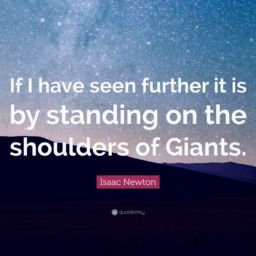
Are you looking for ideas to build a culture of innovation? In part 1 of this 2 -part series, we previously shared some insights into what exactly is a culture of innovation. In this blog, we conclude the series with 3 big ideas that you can use to develop your own initiatives.
Where Do Culture of Innovation Ideas Come From?
Great ideas can come from anywhere, and the most innovative organizations are those who create an environment where creative thinking can emerge, thrive, and find a landing place. For example:
- Protocols and frameworks for employees to share relevant startups or submit new ideas
- Internally sponsored hackathons
- Employee business pitch competitions
- Entrepreneurship events and/or startup speaker series at the HQ (or company field trips)
- Online portal for employees to submit relevant startups or new ideas
- Identification of new landing spots for well formed ideas
- Training and development workshops on Lean Startup Practices specifically for employees
- People empowerment, training and development (i.e. risk taking and learning from failure)
Check out these potential ideas to kick-start the internal conversation about how your organization can promote a culture of innovation through different types programs.
3 Ideas To Consider In Your Next Brainstorm Session
#1
THE INNOVATION BOX
What Is It?
Capture the Lean Startup methodology + the energy and pace of a hackathon and put it into something more tangible and more scalable by creating and distributing an “Innovation Box” to your employees. The brilliance of the innovation box is that it gives your employees permission to unbox creativity and contribute to innovation ideas. The idea of the box works best if it’s available at any time to anyone who has an idea. However, I like to recommend that it’s initiated or piloted as an event and the designated “evangelist” is the one who actually owns the ongoing socialization of this. For example, some companies will host a quarterly seminar to drive engagement and usage i.e. “how to use your box”.
How Could It Work?
Implement it as a part of 20% time to start. This is a concept where you give employees 20% of their time each week to professional improvement and learning. (It can be10% time, too!)
Employees receive a box containing everything a would-be innovator needs to generate, prototype, test and iterate a new idea. The focus is on the innovator learning the process, not necessarily the output and whether or not it is something that gets put into incubation or operationalized. This could include items like the process cards, exercises, checklists, tools (like the BMC), and a prepaid gift card to develop their idea. Included in the box will be instructions, along with how to contact the program leader for guidance and to report the results of experiments to management and the CXO team.
Here are the key activities that you will want to consider as it’s building an innovation kit:
- Establish the “goal” for the innovation kit
- Determine and design box contents that will be distributed to participants
- Design a workshop to teach participants how to use the box
- Socialize program to solicit participants
Potential Critical Success Factors (CSFs)
- Box contents
- Training plan for participants to learn “How to use your kit”
- Socialization plan to solicitation participation
- Socialization plan to follow-up on results
- Implementation plan to adopt ideas
Potential Key Performance Indicators (KPIs:)
- # or % of participants who turned in ideas
- # of ideas received in total
- # or % of ideas being pursued or developed into pilots
- % of IP-generating projects (eligible for patent protection)
- Turnaround time for participant submissions
In addition to the above ideas for measuring success, there can be additional contesting at the local level to encourage participation. For example: have departments compete against one another. In this example, you can have a visible representation of the participation like jars sitting in a breakroom with the department names on it where each “idea” results in a ping pong ball being added to the jar.
High-Level Pros / Cons
Pro: The brilliance of the Innovation Box is that it gives your employees permission to unbox creativity and contribute to innovation ideas
Con: Will require a budget for material production and time + resources to train and encourage employees to use it
Examples of This in Action
Adobe Kickbox. Designed to increase innovator effectiveness, accelerate innovation velocity, and improve innovation outcomes, Adobe delivers a sealed red box to employees containing instruction cards, a pen, two Post-It note pads, two notebooks, a Starbucks gift card, a bar of chocolate, and a $1,000 prepaid credit card. The card can be used on anything the employee would like or need without ever having to justify it or fill out an expense report, and internal training workshops are provided for anyone interested in receiving a box.
It’s been quite a success. Previously, Adobe prototyped 12 to 24 products each year, but in the first year of Kickbox, Adobe tested nearly 1,000 ideas for less money than it used to spend on a dozen ideas.
Cisco Adventure Kit. Inspired by Kickbox, Cisco adapted an innovation kit for their 72k+ employees to learn lean startup methodologies of ideation, investigation, funding, and development. This was rolled out as a part of their “Innovate Everywhere Challenge”. Cisco employees reviewed, commented and voted on ideas from their peers throughout the Challenge. In the first year, their votes helped influence which ideas were surfaced to the panel of industry experts who selected the three winning teams, which were piloted with customers.
The results? Nearly 50 percent of Cisco’s global workforce participated in the program, generating 1,100 new ideas that resulted in actionable pilots in development including a. LifeChanger, which uses collaboration software to enable people with disabilities to work remotely, b. EVAR (Enterprise Virtual and Augmented Reality), a platform combining AR and VR with collaboration solutions to develop far-reaching apps in healthcare and other industries, and c. Rainmaker, a deadline-driven, digital media logistics platform.
#2.
INTERNAL PITCH COMPETITIONS AND HACKATHONS
(aka. “Hackathon as a Process”)
What Is It?
Foster intrapreneurship: bond, brainstorm, and build plans for something bigger than themselves. Also referred to as hackathon as a process”. internal pitch competitions and hackathons create a platform to leverage the expertise of employees as a way to encourage creativity and problem solving.
How Could It Work?
Throughout the course of an 8-hour session, participating employees will team up to compete to solve challenge ideas (aka challenge statements) like how to improve the company, the ways of working or prototype new ideas that may potentially add value to your organization and potentially your customers. The selected “pitch” could also be piloted as an internal program. There can also be prizes for the 1st, 2nd, and 3rd place teams and general giveaways for all participants.
Here are the key activities that you will want to consider as it’s building an internal pitch competition:
- Determine expected outcomes
- Develop challenge ideas that align to outcomes
- Create selection criteria for judges
- Develop tips for moderators
- Solicit and select judges & moderators
- Develop signup sheet & invite participants
- Secure location & catering
- Host event
- Socialize results
- Develop implementation for winner’s pilot
Potential CSFs
- Challenge ideas
- Judges & moderators
- Participants
- Selection criteria
- Prizes / participation giveaways
- Socialization plan
- Implementation plan
Potential KPIs
- % of actionable ideas received
- % of IP-generating projects (or eligible for patent protection)
- % of projects that were developed into pilots
- Team impact on morale and corporate culture (may be subject to additional surveys or feedback mechanisms)
Potential Judging Criteria
The judging parameters will align with the challenge idea. Here are some common parameters that could be suitable for any of the above challenge ideas:
- Creativity – Bringing the “wow” factor to solve a problem
- Usability – Usefulness of the product to solve a problem
- Technicality – The technology used to create the solution
- Scalability – Potential for future upgrades to improve upon the solution
- Business value – Solving a problem while aligning to the business goals
High-Level Pros / Cons
Pro: Can be an effective way to help employees learn the process of innovative thinking and pitching
Con: Ideas generated wouldn’t necessarily have to solve a known organizational pain point or problem, which could be challenging to align with your values
Examples of This in Action
Pepsi (“Fast Pitch”). Pepsi has a number of internal programs aimed at empowering its talent as well as creating an agile, entrepreneurial and experimental culture. One of them, “PepsiCo Fast Pitch,” is a quarterly program where marketers participate in a shark-tank like set up where they are asked to pitch ideas for areas critical to the business, with the chance to win $1 million in marketing activation funding that they must use within 3 months.
Not much is known about the results. Pepsi leadership has been clear that the focus isn’t on how it can impact business today, but how it can deliverable measurable outcomes in the long term. From ideas like a new mixology platform that can go across the whole business, or a future-proofed hydration platform that may be connected, or more thought-provoking activations on social media–which are the areas that wound up being the winning teams–Pepsi is working to implement these scalable ideas so that they will drive long-term business impact and growth.
Thompson Reuters (“Catalyst Fund”). As a part of a company-wide initiative called the “Innovation Network”, intended to make innovation a priority, Thompson Reuters introduced the “catalyst fund” – a pool of money that internal innovation teams can use for doing rapid proof of concept on new ideas.
Originally initiated as experiments to focus on learning, adjusting, and figuring out what would work, the “Innovation Network” is the most visited site on the company’s intranet, and more than 250 ideas were submitted by employees for consideration at the enterprise innovation workshop, some of which are already being implemented.
#3.
INTERNAL EVANGELISM PROGRAM
What Is It?
Building awareness across the organization is the first step to launching an internal evangelism program. Typically, an internal evangelist has multiple channels of evangelism – from hosting competitions and educational seminars on innovation or process as a whole, leading technical demos, etc. This format provides an opportunity to network with and introduce tools across various channels internally including internal socialization, education, process, thought leadership, and research.
Some potential channels could include:
- Thought leadership: social media, white papers, blogs
- Host internal events: pitch competition, education, technical demos
How could it work?
Evangelism and socialization are critical components of gaining excitement about a new product or service internally.
Here are the key activities that you will want to consider as it’s building developer evangelism:
- Establish expectations for the role
- Identify internal channels for evangelism (where to contribute and in what format)
- Create a database of internal thought leaders and influencers who may be interested in engaging with the evangelist
- Include internal evangelism in the innovation process
Potential CSFs
- Channels for evangelism
- Placement of where evangelism fits within the innovation process
Potential KPIs
- # of posts/authoring/quote contributions to social media, website or internal thought leadership
- # reach or engagement in published work
- # of events (webinars or seminars)
- # or % of audience members per event
Example of this in action
Apple – Guy Kawasaki. Kawasaki is credited for blazing the trail for internal and external evangelism as a whole. He described his role at Apple as “to protect and preserve the Macintosh cult by doing whatever I had to do.” Corporate and product marketing has traditionally been about one-way messaging, but to perform well in new channels, it must become two-way. An honest, transparent conversation about one’s business allows authentic connections with internal staff and customers. It draws out their own issues and successes, and in turn can turn them into evangelists with the message that comes from the story itself.
One of his more significant achievements was the success of EvangeList, a mailing list that was a rally cry to internal and external Apple fans around the World to come together to support and strongly defend its products and brand image. Guy took the concepts of transparency and open information and gave it back to the “fans” who in turn became consumer evangelists themselves.
Rackspace – Robert Scoble. Scoble is also an early pioneer of evangelism beginning at Microsoft, then Rackspace. His focus for evangelism has been to inspire and inform from the inside out, so that Rackspace employees are a part of the overall picture. This is fueled by the sentiment that there is too much noise in the marketplace for a story to succeed without inspiring people both internally and externally.
His thought leadership, and the association of that with Rackspace, is widely considered a key driver to accelerating the company to the front of clients’ minds.
These ideas are just the tip of the iceberg. There are so many different ways you can implement a culture of innovation. Some of these tactics can be facilitated in conjunction with one another, like a rollout of the innovation box alongside workshops or professional development time.
What’s Next?
Just imagine the future: what if you encouraged creativity and problem solving to foster and reward intrapreneurship at any level? How would that transform your organization?
Don’t know where to start. It’s ok. When you’re ready to take your internal innovation to the next level, give us a call. It’s never too late to build an organization with enduring value.
###
For further reading, we recommend checking out these articles:




